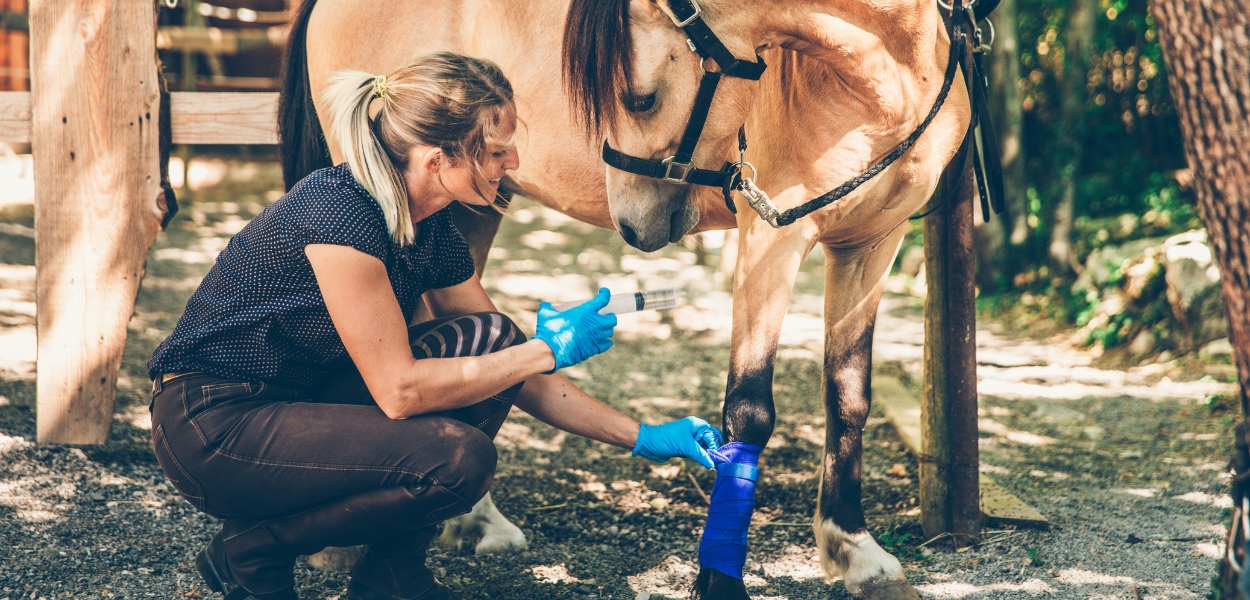How to Care for Your Horse in the Winter

Winter's icy grip and frosty mornings can pose real challenges for horse owners. Fewer hours in daylight, colder temperatures, muddiness, icy buckets with more time in the stable than out. But managing your horse doesn’t have to be stressful through the winter.
It’s important to remember that your horse still needs you at this time and that with some planning, there are a few ways you can make sure that your horse is taken care of.
Find a Livery or Stable Near You
Taking care of a horse isn't easy. So, if you're seeking top-notch stabling and livery services, explore Cavago—our platform hosts a curated selection of reputable businesses.
Cavago simplifies the process of finding quality facilities near you, ensuring convenience and peace of mind. With a commitment to excellence, our platform is designed to meet the discerning needs of equestrian enthusiasts, providing a seamless experience in discovering and securing premier stabling options.
Nutrition
Did you know that horses have evolved to ferment their food in their digestive tracts?
This process creates heat and allows them to stay warm in the winter. This is why horses tend to require more feed during the winter than other months to keep warm. Feeding them with hay, a type of forage, will help them do this most efficiently as it produces more heat during fermentation than other feed. It’s important to keep in mind, however, how much hard active work your horse is performing so as not to overfeed, which can lead to obesity or colic.
Be aware that due to the low nutritional profile of grass in the winter, a mineral supplement or feed balancer might also be needed. You should also keep a check on your horse’s water requirement, which may increase because of the increase in dried forage. Check the trough if there are freezing temperatures out, and keep a backup supply of water in case the pipes get jammed, too.
Tip: Placing a football or tennis ball in the trough can prevent the water from freezing!
Warmth
This one is specific to the horse or pony breed that you keep. Generally, horses have developed the ability to fluctuate their weight throughout the year to adapt to different seasons. For instance, they might use the spring and summer to replenish their fat stores and gain a few extra pounds in order to use them in the winter.
For the most part, however, horses don't start to feel cold until it's 5 degrees or lower, and unnecessary rug use can interfere with their innate ability to fluctuate their weight, which can be bad for their health in the long run. Hence, not all breeds need rugs in the winter or rain. But other factors such as age, living conditions, workload, and health need to be considered as well.
Shetland and Welsh ponies are well adapted to cold weather and grow thick winter coats with plenty of natural oils to protect them from the elements. Finer-coated horses such as Warmbloods and Thoroughbreds are more likely to struggle with keeping warm and could use the extra help of a nice, breathable rug. So will older, sick, or injured horses and clipped working horses. Keep some spare rugs to rotate in case of wet weather. Ensure not to over-groom during this time, as your horse really needs to keep the essential natural oils it produces.
Shelter
Is your horse stabled? Or does it live outside year-round with a herd? There are things to keep in mind for each approach. A suitable outdoor shelter, whether artificial or a copse of trees or even a hedge with easy access for the whole herd, is just fine. Living outdoors ensures they get some exercise throughout the day, too.
For stabled horses, deep, low-dust bedding with regular mucking and airing is important. Turning out for daily exercise is also important; otherwise, being confined to a stable environment for prolonged periods can cause the horse physical and mental stress.
If it’s too wet in the fields for exercise, consider a yard or a barn to let your horse loose in to stretch its legs for a few hours. For harsher weather conditions such as snow, when you might be unable to get to your horses, it can be helpful to pre-plan in order to manage the situation and ensure that everyone involved is aware of the protocol.
Exercise
Adjust your exercise routine based on the weather and your horse's temperament. To ensure a safe footing for both you and your equine companion, stock up on grit and salt. During icy conditions, generously sprinkle these materials on yards and walkways to prevent slips and falls. Avoid riding on slippery surfaces or in poor visibility. Daily outdoor exercise, whether under saddle, in-hand, or in a turn-out area, is crucial for your horse's well-being. Movement and grazing promote gut health and reduce the risk of colic.
In Germany, they have a saying there is no bad weather,
only bad clothing.
For horse owners, we’d like to tweak that and say that there is no bad weather, only bad planning. It can go a long, long way when the weather gets rough, so just keep these four main aspects in mind, and before you know it, it’ll be warm riding season again!


